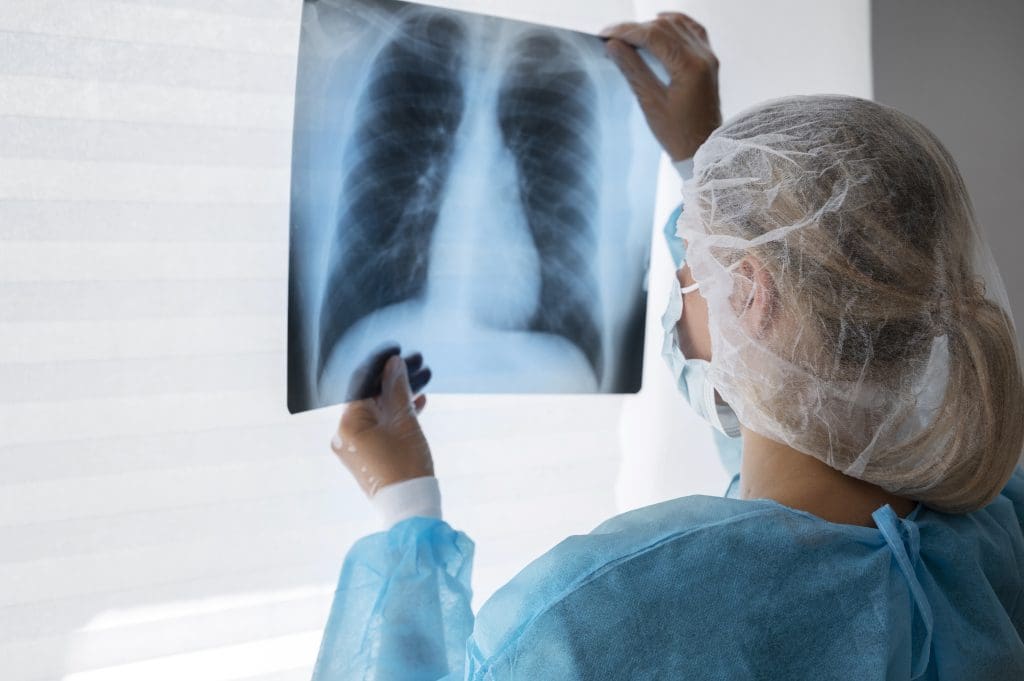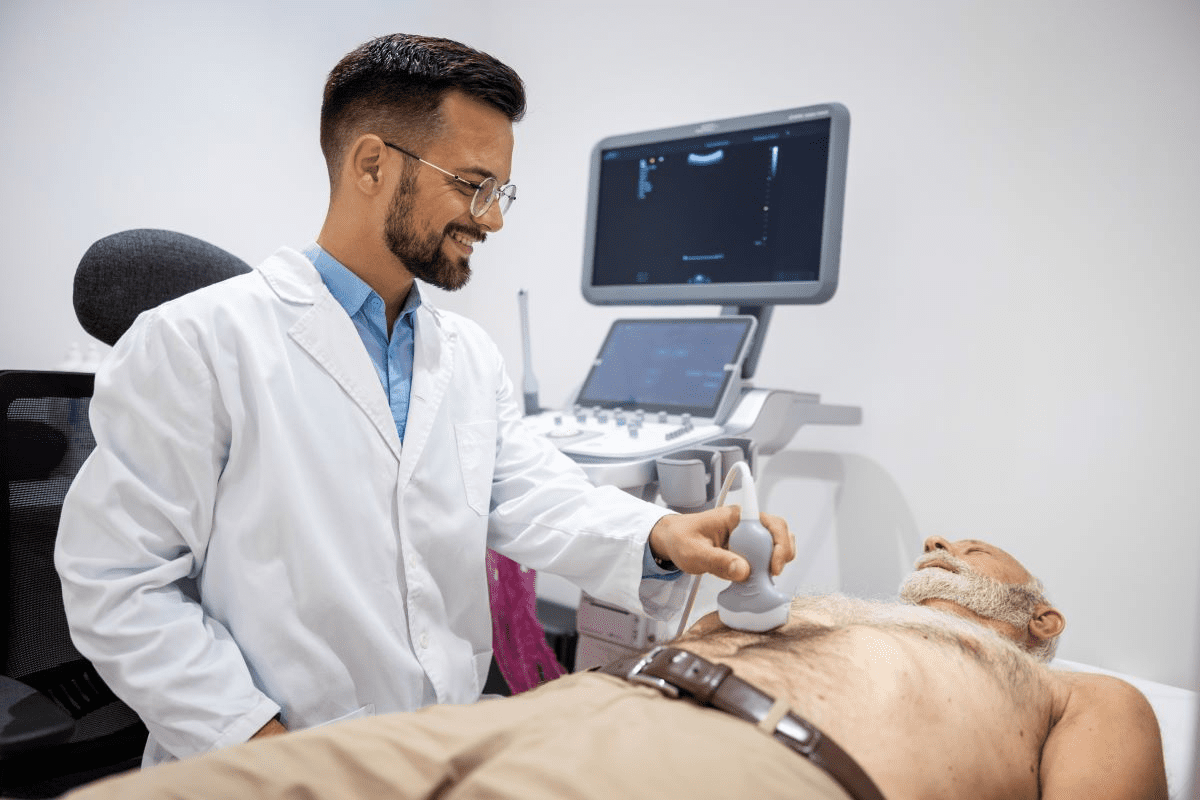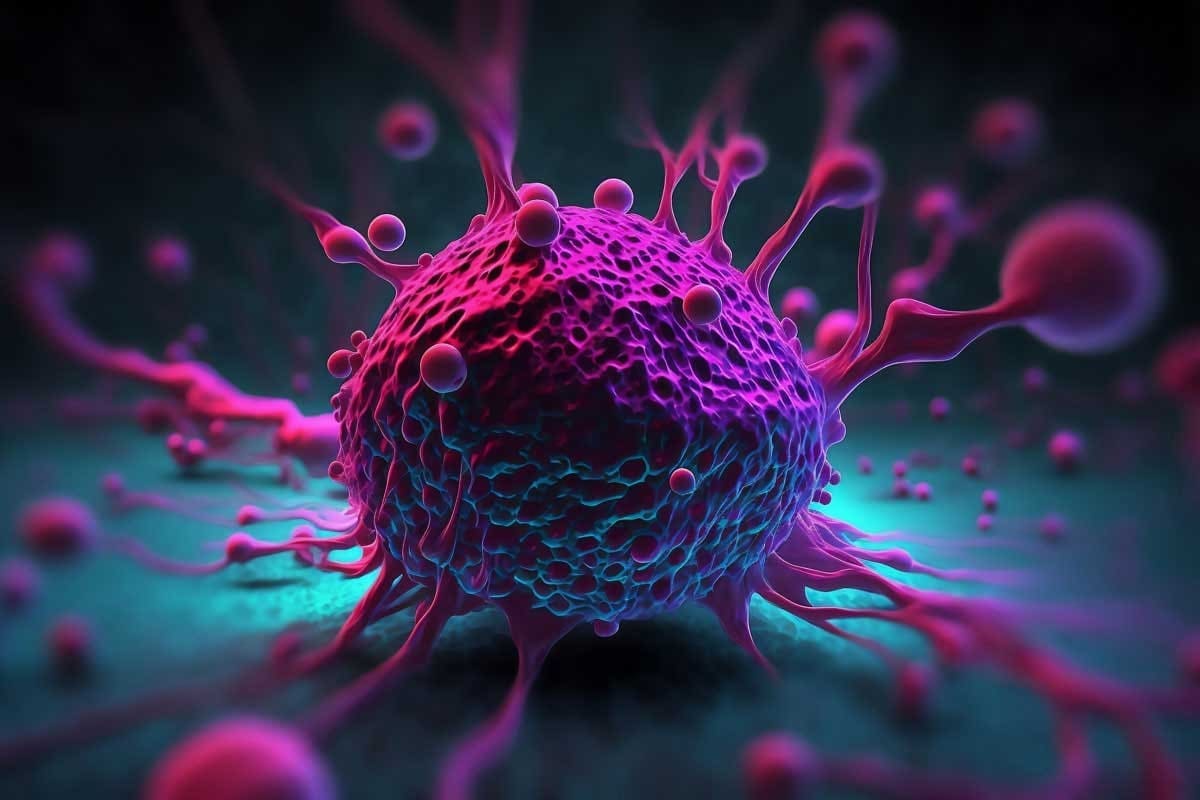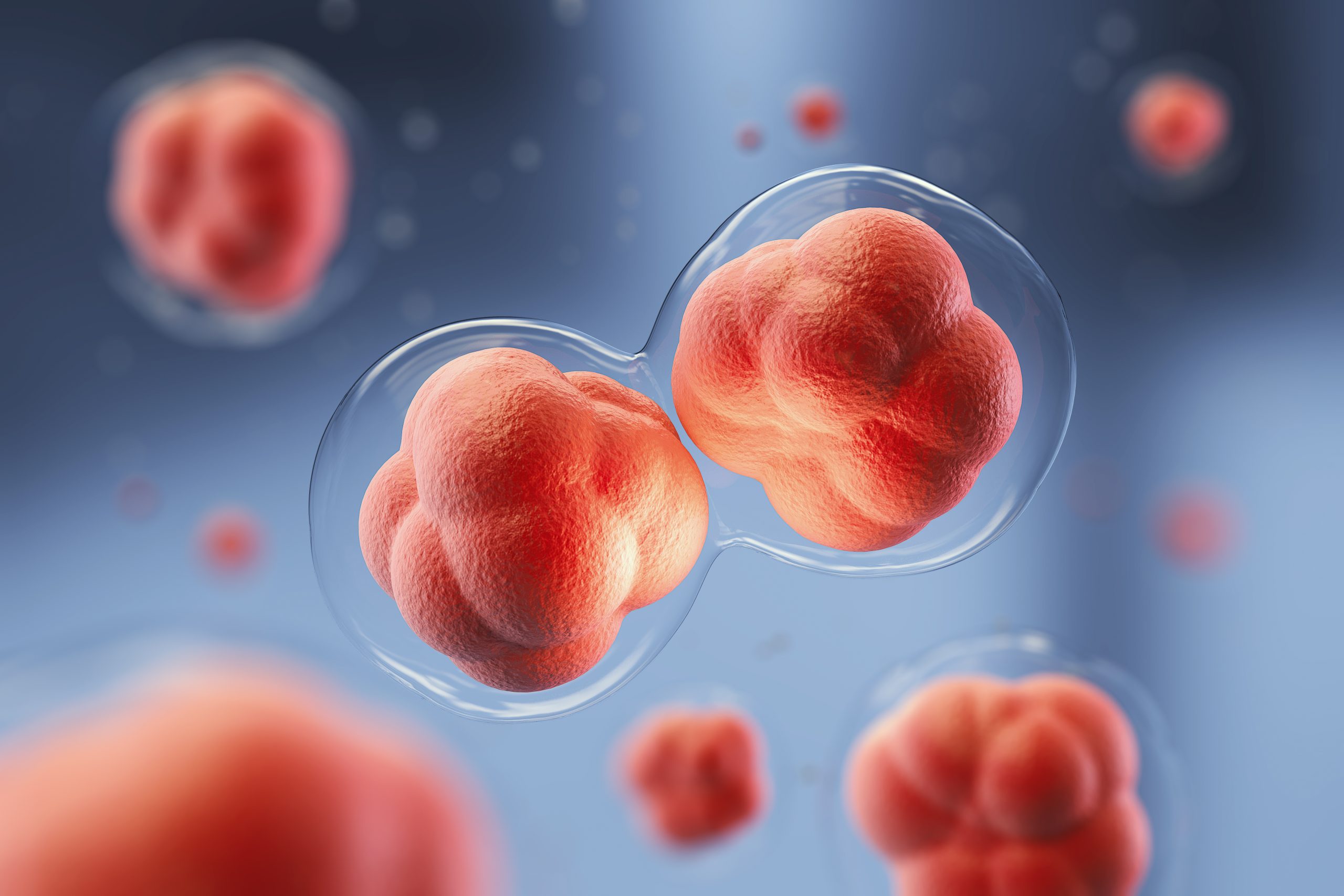Last Updated on November 27, 2025 by Bilal Hasdemir
What is the Hardest Cancer to Cure? Understanding Glioblastoma Prognosis and Other Challenging MalignanciesCancer is a big challenge in medicine, with some types being very hard to treat. Glioblastoma is known for its bad prognosis. Survival rates haven’t changed much over the years.
The battle against the most challenging cancers continues, with researchers striving to better understand them. This article will look into glioblastoma and other tough cancers. We’ll explore the latest research and what might come next.
Key Takeaways
- Cancers like glioblastoma are among the most challenging to treat due to their aggressive nature and resistance to current therapies.
- The hardest cancers list includes several types that are known for their poor prognosis and limited treatment options.
- Understanding the deadly cancers ranking can help in prioritizing research and treatment efforts.
- Research into incurable cancer types is critical for finding new treatments.
- Advancements in medical technology and research are essential for better patient outcomes with tough cancers.
The Concept of Cancer Curability

The idea of curing cancer is complex. It involves knowing the difference between being “cured” and being in “remission.” These terms are key to understanding treatment success and patient outcomes.
How Medical Science Defines “Cure” vs. “Remission”
A cancer cure means the disease is gone for good. Remission is when the cancer responds to treatment and can’t be found, but it might come back. It’s important to know this to manage patient hopes and make treatment choices.
Some cancers can stay in remission for years. If the chance of it coming back is very low, patients might be called cured. But, saying someone is cured is careful because cancer can always come back.
Measuring Cancer Survival Rates
Cancer survival rates show how many patients live with a certain cancer for a set time after diagnosis. These rates are usually for five-year survival rates, showing the percentage alive five years after diagnosis.
Survival rates depend on many things. This includes the cancer type and stage at diagnosis and how well treatments work. For example, cancers like pancreatic cancer and glioblastoma often have low survival rates. This is because they are often found late or have few treatment options.
Knowing cancer survival rates helps patients and doctors make better treatment choices. It gives a clearer idea of what to expect.
Factors That Make Certain Cancers Difficult to Treat
Many factors make some cancers hard to treat. This makes it tough to find effective treatments. It’s important to understand these challenges to improve treatment options.
Anatomical Location and Accessibility
The place in the body where a tumor grows affects how easy it is to treat. Tumors in hard-to-reach spots, like the pancreas or brain, are very challenging. This is because they are close to important parts of the body.
For example, brain tumors like glioblastoma are very hard to treat. This is because they are in the brain. The brain is hard to fix and has a special barrier that stops many treatments from getting in.
Cellular and Genetic Characteristics
The way cancer cells grow and their genes are important for treatment success. Tumors with many genetic changes or that are very different inside are more likely to resist treatment.
| Cancer Type | Genetic Characteristic | Treatment Challenge |
| Glioblastoma | High mutational burden | Resistance to chemotherapy |
| Pancreatic Cancer | Dense stroma | Limited drug delivery |
| Lung Cancer | EGFR mutations | Variable response to targeted therapy |
Detection Challenges and Late Diagnosis
Finding cancer early is key to treating it well. But many cancers don’t show symptoms early. This means they are often found too late.
There are no good tests for some cancers yet. We need better tests and to teach people about cancer signs. This could help find cancer sooner and improve treatment results for difficult to treat cancer.
Glioblastoma Prognosis: Why Brain Cancer Remains So Lethal
Glioblastoma is a tough cancer to beat, mainly because it’s in the brain. It spreads quickly and is hard to treat. This makes it one of the deadliest cancers out there.
Blood-Brain Barrier Challenges
The blood-brain barrier (BBB) is a big problem for glioblastoma treatment. It keeps the brain safe but stops treatments from getting to the tumor. This makes treatments less effective.
Many drugs can’t get past the BBB to the tumor. This is because the BBB is very picky about what it lets through. Scientists are working on new ways to get drugs to the tumor, like special delivery systems.
Infiltrative Nature of Glioblastoma Cells
Glioblastoma cells spread out into the brain, making it hard to remove them all. This also makes it tough to target them with radiation without harming the brain.
The way glioblastoma cells spread is why it’s so aggressive and comes back. Even after treatments, some cells can stay and cause the tumor to come back. These cells are often harder to treat the second time around.
Current Survival Statistics and Treatment Limitations
The outlook for glioblastoma patients is not good. Even with surgery, radiation, and chemo, most people don’t live long. The average time people live after being diagnosed is about 15 months. Only a small percentage live five years or more.
There are a few reasons why treatments don’t work as well as they could. The tumor is resistant to treatments and can come back. Researchers are looking into new ways to fight glioblastoma, like immunotherapy and targeted treatments. They hope these will help people live longer.
Pancreatic Cancer Survival: The Silent Threat
Pancreatic cancer survival rates are very low. This is because it’s hard to catch it early and treat it. It’s often found too late, making it tough to beat.
Why Early Detection Remains Elusive
Finding pancreatic cancer early is rare. The symptoms are vague and can be mistaken for other, less serious issues. By the time it’s diagnosed, it’s usually too late.
Lack of specific symptoms and limited screening methods make it hard to catch early. Most patients are diagnosed when the cancer has spread, making treatment more difficult.
The Aggressive Biology of Pancreatic Adenocarcinoma
Pancreatic adenocarcinoma is the most common type of pancreatic cancer. It grows fast and spreads quickly, making surgery hard.
- High propensity for local invasion
- Early metastasis to lymph nodes and distant organs
- Resistance to conventional chemotherapy and radiation
Five-Year Survival Rates and Treatment Challenges
The five-year survival rate for pancreatic cancer is very low. It’s about 9% overall. For those with localized disease, it’s around 39%. But, it drops a lot for those with regional or distant metastasis.
Treatment is tough because the cancer is hard to fight. Multidisciplinary treatment approaches, like surgery, chemotherapy, and radiation, are used to try and improve survival rates.
Lung Cancer Mortality: A Leading Cause of Cancer Deaths
Lung cancer is a major cause of cancer deaths worldwide. It’s important to understand its prognosis and treatment challenges. The high death rate is due to the type of lung cancer, smoking, and treatment resistance.
Small Cell vs. Non-Small Cell Prognosis Differences
Lung cancer is divided into two types: small cell lung cancer (SCLC) and non-small cell lung cancer (NSCLC). NSCLC is more common. The prognosis varies significantly between these two types. NSCLC grows and spreads slower than SCLC, which is aggressive and progresses quickly.
“The distinction between SCLC and NSCLC is critical for determining the prognosis and choosing the right treatment,” studies in oncology highlight.
Impact of Smoking and Other Risk Factors
Smoking is the main risk factor for lung cancer, causing 80 to 90 percent of deaths. The risk is higher in long-term smokers. Non-smokers can also get lung cancer from radon, asbestos, and chemicals.
- Smoking
- Exposure to radon and asbestos
- Genetic mutations
Knowing these risk factors is key for prevention and early detection.
Treatment Resistance Mechanisms
One big challenge in treating lung cancer is resistance to therapies. Tumor cells can become resistant through various mechanisms, like genetic mutations and changes in the tumor microenvironment.
“Overcoming treatment resistance is a critical area of research in lung cancer, with ongoing studies focusing on targeted therapies and immunotherapies.”
New research on treatment resistance has led to new therapies. This offers hope for better outcomes in lung cancer patients.
Esophageal Cancer Outlook: Anatomical and Treatment Challenges
Understanding esophageal cancer’s prognosis and treatment challenges is key to better patient care. This disease has two main types: adenocarcinoma and squamous cell carcinoma. Each type has its own factors affecting prognosis and treatment.
Adenocarcinoma vs. Squamous Cell Carcinoma Prognosis
The outlook for esophageal cancer differs between adenocarcinoma and squamous cell carcinoma. Adenocarcinoma, common in Western countries, often starts in Barrett’s esophagus. It has a slightly better prognosis than squamous cell carcinoma when caught early.
Squamous cell carcinoma, linked to smoking and alcohol, usually presents later. This makes its prognosis worse.
| Histological Type | 5-Year Survival Rate (%) | Common Risk Factors |
| Adenocarcinoma | 20-30 | Barrett’s esophagus, obesity, GERD |
| Squamous Cell Carcinoma | 15-25 | Smoking, alcohol consumption |
Surgical Complexities and Their Impact on Outcomes
Surgery is a mainstay in treating esophageal cancer, but it comes with big challenges. The esophagus’s deep location in the thorax, surrounded by important structures, makes surgery hard. Complications like leaks and breathing issues are common, affecting patient outcomes and quality of life.
Recent Advances in Multimodal Treatment
Recent years have brought big steps forward in treating esophageal cancer. Now, surgery, chemotherapy, and radiation therapy are used together to better outcomes. Neoadjuvant therapies aim to shrink tumors before surgery, which might improve survival chances.
Targeted and immunotherapies are also being looked into. They offer hope for those with advanced disease.
The outlook for esophageal cancer patients is getting better with new treatments and a deeper understanding of the disease. While challenges persist, combining different treatments shows promise for better survival and quality of life for patients.
Liver Cancer Survival Rate: Primary and Secondary Considerations
The outlook for liver cancer patients depends on several important factors. These include the type of liver cancer, the stage at diagnosis, and the patient’s overall health.
Hepatocellular Carcinoma Prognosis
Hepatocellular carcinoma (HCC) is the most common type of liver cancer, making up about 75% of cases. The prognosis for HCC patients depends on the cancer’s stage at diagnosis. Early-stage HCC may be treated with the goal of a cure, while advanced stages often have fewer treatment options.
Survival rates for HCC have seen a slight increase over the years. This is thanks to better treatments like surgery, ablation therapies, and targeted treatments.
Underlying Liver Disease as a Complicating Factor
Underlying liver disease, like cirrhosis, complicates liver cancer treatment. Cirrhosis can be caused by hepatitis B and C, alcohol abuse, and non-alcoholic steatohepatitis (NASH).
The presence of cirrhosis not only makes treatment harder but also impacts survival. Patients with cirrhosis are at a higher risk for HCC. They also have limited liver function, making aggressive treatments risky.
Treatment Options Based on Cancer Stage
Treatment for liver cancer depends on the stage. Early-stage patients may be eligible for treatments that could cure them, like surgery or liver transplantation.
- Early-stage liver cancer: Surgical resection or liver transplantation
- Intermediate-stage liver cancer: Locoregional therapies like transarterial chemoembolization (TACE)
- Advanced-stage liver cancer: Systemic therapies including targeted therapy and immunotherapy
The choice of treatment depends on several factors. These include tumor size, number, location, and the patient’s liver function and overall health.
Ovarian Cancer Late Stage: The “Silent Killer”
Ovarian cancer is often called a “silent killer.” It’s hard to spot early because its symptoms are not clear. This makes it tough for both patients and doctors to catch it until it’s too late.
Why Symptoms Often Appear Only in Advanced Disease
The signs of ovarian cancer are vague and can be mistaken for other issues. Symptoms include bloating, pelvic pain, and trouble eating. These signs are often mild and don’t always lead to a quick doctor visit, causing a delay in diagnosis.
A study in Frontiers in Molecular Biosciences sheds light on how ovarian cancer grows. It stresses the need for better ways to find it early.
- Bloating and abdominal distension
- Pelvic pain or discomfort
- Difficulty eating or feeling full quickly
- Urinary urgency or frequency
Challenges in Screening and Early Detection
There aren’t many good ways to screen for ovarian cancer. Tools like ultrasound and the CA-125 blood test aren’t very accurate. This makes it hard to catch the cancer early, when it’s easier to treat.
Key Challenges:
- Lack of specific symptoms
- Limited effectiveness of current screening tools
- High risk of false positives
Treatment Approaches for Advanced Disease
For advanced ovarian cancer, treatment usually includes surgery, chemotherapy, and targeted therapy. The aim is to remove as much tumor as possible and stop the cancer from growing.
New treatments have helped improve survival rates for ovarian cancer patients. These include better chemotherapy and targeted therapies that target specific tumor features.
| Treatment Approach | Description |
| Surgery | Removal of as much tumor as possible |
| Chemotherapy | Use of drugs to kill cancer cells |
| Targeted Therapy | Treatment that targets specific molecular features of the tumor |
Bile Duct Cancer: A Rare but Devastating Diagnosis
Bile duct cancer, or cholangiocarcinoma, is a rare and serious disease. It starts in the cells lining the bile ducts. These ducts are key for digestion, moving bile from the liver to the small intestine.
Anatomical Complexities and Surgical Challenges
The bile ducts are complex, with parts inside and outside the liver. This makes surgery hard. Where the tumor is located affects treatment and chances of survival.
Surgical Challenges:
- It’s hard to remove the tumor completely because of its location
- There’s a risk of harming nearby important structures
- Some parts of the bile ducts are hard to reach
The complexity of the bile ducts makes surgery tough. It also leads to late diagnosis. Symptoms may not show up until the disease is far along.
Limited Treatment Options and Research Funding
Even with research, treatments for bile duct cancer are few. Doctors use surgery, chemotherapy, and radiation together.
Challenges in Treatment:
- Current chemotherapy doesn’t work well
- Radiation is mostly used to ease symptoms, not cure
- Surgery might cure some, but it’s rare
A study in a top medical journal found the five-year survival rate for bile duct cancer is very low. This shows we need better treatments. Getting more funding for research is key to helping patients.
“Advances in understanding the molecular pathogenesis of cholangiocarcinoma have paved the way for targeted therapies and immunotherapies, promising new hope for patients with this aggressive malignancy.”
To help bile duct cancer patients, we need more research, awareness, and better treatments.
Multiple Myeloma Prognosis: Challenges in Blood Cancer Treatment
The outlook for multiple myeloma patients is a worry because finding a complete cure is hard. This blood cancer makes the bone marrow grow cancerous cells. This can cause bone damage, anemia, and kidney problems.
Why Complete Cure Remains Elusive
Finding a complete cure for multiple myeloma is tough. It’s often caught late, making treatment harder. Myeloma cells also grow resistant to treatments, making them less effective over time. The bone marrow’s environment helps myeloma cells survive and grow, making it hard to get rid of the disease.
Key challenges include:
- Myeloma cells can evolve and resist treatment.
- The bone marrow environment helps the disease grow.
- We don’t fully understand the genetic causes of the disease in each patient.
Recent Advances Improving Survival Rates
New treatments have greatly improved survival chances for multiple myeloma patients. New drugs like proteasome inhibitors, immunomodulatory drugs, and monoclonal antibodies have shown to be effective.
Recent advances include:
- Proteasome inhibitors like bortezomib have improved treatment results.
- Immunotherapies, including CAR-T cell therapy, are showing great promise in trials.
- Better care for side effects and complications has also helped.
These breakthroughs highlight the need for ongoing research. They show there’s hope for even better treatments for multiple myeloma in the future.
Cancer Treatment Resistance: Why Some Tumors Evade Therapy
Treatment resistance in cancer is a complex issue. It involves genetics, molecules, and the environment. Despite new treatments, some tumors keep avoiding them. This leads to the disease getting worse and poor results.
Genetic and Molecular Mechanisms
Genetic and molecular changes are key in cancer resistance. Changes in genes can affect how drugs work. For example, changes in the EGFR gene can make some lung cancers resistant to certain treatments.
Signaling pathways like PI3K/AKT and MAPK/ERK also play a part. They help cells survive and grow, making tumors harder to treat. Knowing how these mechanisms work is important for finding new ways to fight resistance.
Tumor Heterogeneity and Evolution
Tumors are made up of different cells, which makes them hard to treat. Over time, tumors can change and find new ways to avoid treatment. This diversity can make tumors more aggressive and tough to fight.
Microenvironment Factors
The area around a tumor, called the microenvironment, is also important. It includes immune cells, fibroblasts, and endothelial cells. This environment can help tumors grow and resist treatment by releasing growth factors and cytokines.
Cancer-associated fibroblasts, for instance, can help tumors grow by supporting blood vessel formation. Understanding how tumors interact with their environment is key to finding better treatments.
Rare Aggressive Cancers with Poor Outcomes
The medical world struggles with rare and aggressive cancers like glioblastoma and pancreatic cancer. These cancers grow fast and have a bad outlook, leading to poor results for patients.
Rare aggressive cancers are tough to tackle because of their complex nature and late discovery. Several factors make their outcomes worse:
- Late detection and diagnosis
- Aggressive tumor biology
- Limited treatment options
- Resistance to conventional therapies
Conclusion: Advances in Treating the Hardest Cancers
Recent breakthroughs in cancer treatment offer hope for those with the toughest cancers. This includes glioblastoma and pancreatic cancer. Researchers are working hard to understand these cancers better and find new treatments.
For glioblastoma, new surgical methods, radiation, and targeted treatments are helping. Pancreatic cancer treatment is also getting better, thanks to early detection and stronger chemotherapy. These changes are helping more people survive cancer.
As scientists learn more about these cancers, they’re finding new ways to fight them. By keeping up the research and spreading the word, we can help more people beat these hard-to-treat cancers.
FAQ
What are the hardest cancers to cure?
The hardest cancers to cure include glioblastoma, pancreatic cancer, and lung cancer. Also, esophageal, liver, ovarian, stomach, bile duct, and multiple myeloma cancers are very tough to beat. These cancers are often found late, are aggressive, or have few treatment options.
What is glioblastoma prognosis?
Glioblastoma has a poor prognosis. The five-year survival rate is about 5-7%. It’s hard to treat because of the blood-brain barrier and how glioblastoma cells spread.
Why is pancreatic cancer survival rate low?
Pancreatic cancer is hard to cure because it grows fast and is hard to find early. The five-year survival rate is around 9%.
What is the difference between “cure” and “remission” in cancer?
A “cure” means the cancer is gone for good. “Remission” means the cancer is controlled, but it could come back.
How are cancer survival rates measured?
Survival rates are measured by the five-year survival rate. It shows the percentage of people who live at least five years after being diagnosed.
What factors contribute to making certain cancers difficult to treat?
Several factors make some cancers hard to treat. These include where the cancer is, its cell and genetic makeup, and how hard it is to find and diagnose early.
What is the outlook for esophageal cancer?
Esophageal cancer’s outlook depends on the type and stage. Adenocarcinoma and squamous cell carcinoma have different outlooks. Surgery’s complexity also affects outcomes.
How does liver disease impact liver cancer survival rates?
Liver disease can make treating liver cancer harder and affect survival rates. The prognosis for hepatocellular carcinoma depends on the cancer’s stage and the liver disease.
Why is ovarian cancer often diagnosed at a late stage?
Ovarian cancer is often found late because symptoms are vague and may not show until the disease is advanced. Finding it early is a big challenge.
What are the treatment challenges for bile duct cancer?
Bile duct cancer is rare and aggressive with few treatment options. Its location and the challenges of surgery make it hard to treat.
What is the prognosis for multiple myeloma?
Multiple myeloma’s prognosis has improved with new treatments. But, a complete cure is not yet possible, and the disease is tough to manage.
Why do some cancers develop treatment resistance?
Cancers can resist treatment due to genetic and molecular reasons. Tumor heterogeneity and the tumor microenvironment also play a role.
What are some of the latest advances in treating the hardest cancers?
New treatments for hard-to-cure cancers include combining therapies, targeted treatments, and immunotherapies. These advances have improved survival rates and treatment results for some cancers.
What is the hardest cancer to cure?
Glioblastoma is one of the toughest cancers to cure. Its aggressive nature, the blood-brain barrier, and how glioblastoma cells spread make it challenging.
Are there any rare aggressive cancers with poor outcomes?
Yes, rare aggressive cancers with poor outcomes include bile duct cancer, certain sarcomas, and some rare leukemias.






